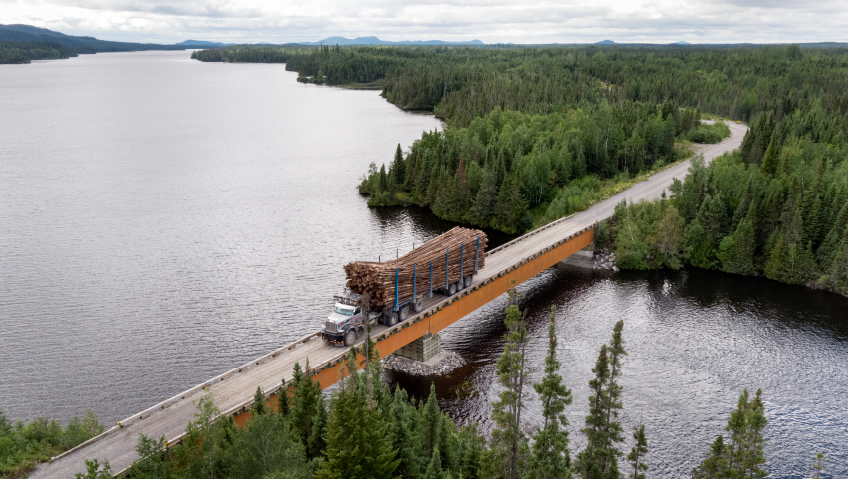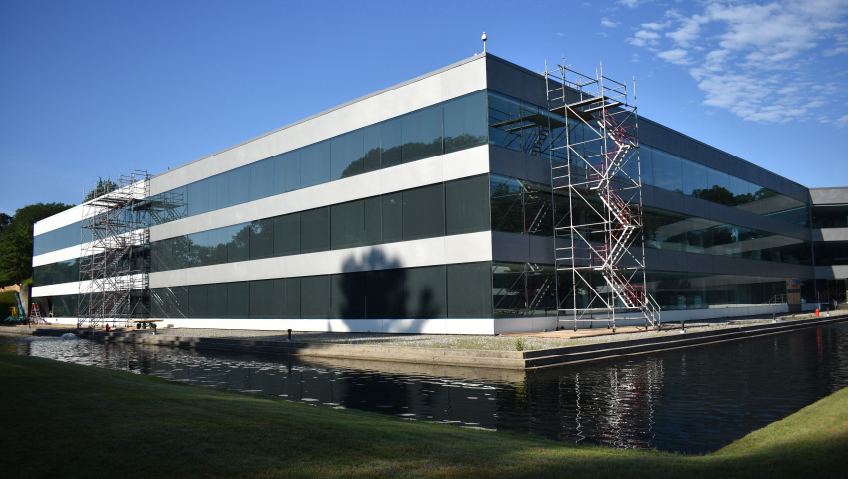There is a quote attributed to Wayne Gretzky that you have likely seen in PowerPoint presentations. It is the one about skating to where the puck is going, rather than where it is. In hockey, Gretzky seemed to have a preternatural ability to anticipate the best place to be. In business, Cushing Terrell has that same knack.
Pulling together architecture, engineering, and design, Cushing Terrell “designs systems and spaces that help people live their best lives,” says its website. In practice, the firm serves a variety of market segments from commercial and government to education, retail, healthcare, infrastructure, and residential with a team encompassing more than 30 disciplines.
It is that breadth of specialization that truly makes Cushing Terrell stand out, and it has been embedded in the business from the beginning.
The company was founded in 1938 in Billings, Montana. Architects Ralph Cushing and Everett Terrell—with Cushing possessing significant engineering expertise—joined forces with the core belief that a multidisciplinary, integrated design practice would deliver the best results for their clients. That is exactly what they achieved with their first project in 1938: the construction supervision of Billings Senior High School.
It was unique to have multiple disciplines under one roof in 1938. Cushing Terrell’s Director of Sustainability, Ashleigh Powell, believes in the vision of the founders and notes that it is still unique to this day.
“With our structure, all disciplines can be at the table early in a project, collaborating around strategies right at the onset, where you can make the biggest impact. It was our foundation from day one, and it continues to define how we build teams and deliver services,” she says.
It is not just in the execution of a project; Powell points out that when the firm is considering projects, this multidisciplinary structure allows the team to develop more creative solutions for proposals.
Today, against the backdrop of decarbonization efforts, sustainability is one of the most rapidly growing segments of the business, and this area of focus is yet another example of the company being ahead of the curve. It started in 1975—before most people or businesses were thinking about sustainability—with the introduction of the firm’s energy conservation practice.
It is also what attracted Powell to the company. “When I moved to Austin in 2005 to pursue my masters of sustainability at the University of Texas School of Architecture, Cushing Terrell was the only company that mentioned sustainability in their job posting. It was a differentiator; it grabbed my attention.”
Powell learned through the interview process that the firm had already established an internal green advocacy council, so it was an easy decision to join.
In the ensuing years, its sustainability practice gained momentum through the U.S. Green Building Council, which launched its first LEED (Leadership in Energy and Environmental Design) program in 2000. With more than 100 LEED-accredited professionals in the early days, Cushing Terrell’s sustainability practice grew, certifying green building projects in all its specialties.
Around the time of the pandemic, Powell saw a notable shift in the approach other companies were taking to sustainability. “More companies were getting more serious about developing their own sustainability practices in alignment with their Environmental, Social, and Governance (ESG) commitments and/or decarbonization objectives,” she shares. “So we’re now doing more work with clients to develop custom sustainability standards or to design within their existing standards.”
In sharp contrast to the doom-and-gloom tone that dominates much of the news related to environmental sustainability, Powell sees positive changes taking place behind the scenes. “It’s really interesting to be able to peek behind the curtain. These companies’ commitments are closely tied to their corporate structure, and it’s a top-down commitment. In some cases, even CEO compensation is tied to meeting those goals.”
She notes that the early decisions about the structure of Cushing Terrell positioned the company for this work. “We need everyone at the table to help companies with those wide-reaching goals. We couldn’t be as effective if we didn’t have the multidisciplinary team that we do.”
The team is also geographically diverse, with employees living and working in many parts of the United States. The rapid expansion of remote work through the pandemic was part of it, but once again, Cushing Terrell was ahead of the trend.
“I remember as far back as 2008, the president of our firm was talking about remote work. He said it shouldn’t matter where you sit, and that has allowed us to attract the best people to our team, regardless of where they are,” says Powell.
The firm counts some very large companies among its clients—Google in California, Texas, and Washington, and Dell, for example—but when a sustainable future is the objective, businesses of all sizes have a role to play, and Cushing Terrell can help.
“Right now, we’re helping a local company inventory their Scope One (direct) and Two (indirect) greenhouse gas emissions. For the company, it translates to energy efficiency and resilience but it’s really about alignment with the imperative to decarbonize their operations.”
Powell points to two projects that are particularly notable for the company, in that they embody the full range of Cushing Terrell’s capabilities.
Ten years ago, the team led the design and construction of the visitor center at the Pahranagat National Wildlife Refuge in Nevada. With upgraded insulation, daylight harvesting, geothermal heating and cooling, and onsite solar generation, the facility was on track for net-zero energy consumption. After its first year of operation, energy data showed that it had exceeded that by a wide margin. In fact, it was feeding twice the amount of energy back to the grid than it consumed, and it has done so for the past decade.
The other project that Powell highlights is Romney Hall at Montana State University, a project that called for modernizing the building constructed in 1922. Ultimately, 17 new classrooms were added along with centers for math, writing, veterans, and students with disabilities. This structure is now more accessible and more energy-efficient, all while preserving the character as well as the embedded cost of the materials already used in its original construction.
Projects like these reflect why Cushing Terrell has been widely recognized with industry awards. The Romney Hall project received recognition for adaptation and reuse. Interior Design Magazine placed the company in the top 100 firms in its inaugural sustainability category of the ‘Interior Giants’ ranking, and in 2023, it was given the prestigious ‘Mountain States Design Firm of the Year’ designation by Engineering News-Record (ENR).
It may be a cliché but, in Cushing Terrell’s case, the company’s success is truly about its people.
“I’ve been with the company for 17 years,” says Powell. “It’s unique in the industry to have that kind of tenure, but not here. A lot of our people have been with the practice for a long time. There’s a really strong sense of community and family. We celebrate our mission, vision, and values, and there’s a personal alignment in our commitment to the communities where we live and work.”
That commitment manifests, in part, in the pro bono work Cushing Terrell does. The company has always done pro bono work, but two years ago, it organized that practice. Nominations are gathered from staff and the community at large, submissions are vetted, and a deserving project—typically a charity or non-profit organization—is selected.
This kind of integrity is one of the company’s values and also shows up in the way it makes the same commitments to sustainability as its clients do. “We’ve taken the approach over the years that if we’re going to sell a service, like green building certification, we should experience it ourselves and certify our own offices,” says Powell.
The company’s Billings office was thus LEED-certified in 2002, which was very early for that designation. That ‘walk the walk’ commitment continues to this day. The company is a signatory to multiple emissions-reduction commitments, and its Boise office was the first in the United States to be platinum-certified in the LEED v4.1 commercial interiors rating system.
After 85 years of being one step ahead, what is next for Cushing Terrell? More of the same, starting with a more data-driven approach.
“We’ve created a post-occupancy research group. They’re conducting onsite analyses after the completion of projects, surveying the occupants, measuring acoustics and daylight values in the space, and more. That helps us complete the learning, bringing feedback back to the design teams about how those designs are working and being used in the real world,” Powell explains.
Naturally, Cushing Terrell’s integrity is also a big part of the company’s future. “We’ve been focused on operational energy in our sustainability practice; now, we’re looking more holistically at the embodied carbon footprint of the materials used in the building. Our commitment to a sustainable planet also extends to people. We’re getting involved in the Design for Freedom movement, which aims to reduce the forced and slave labor that goes into the manufacture of many building materials.”
Learn more about Cushing Terrell and its sustainability practices by visiting https://cushingterrell.com/.






